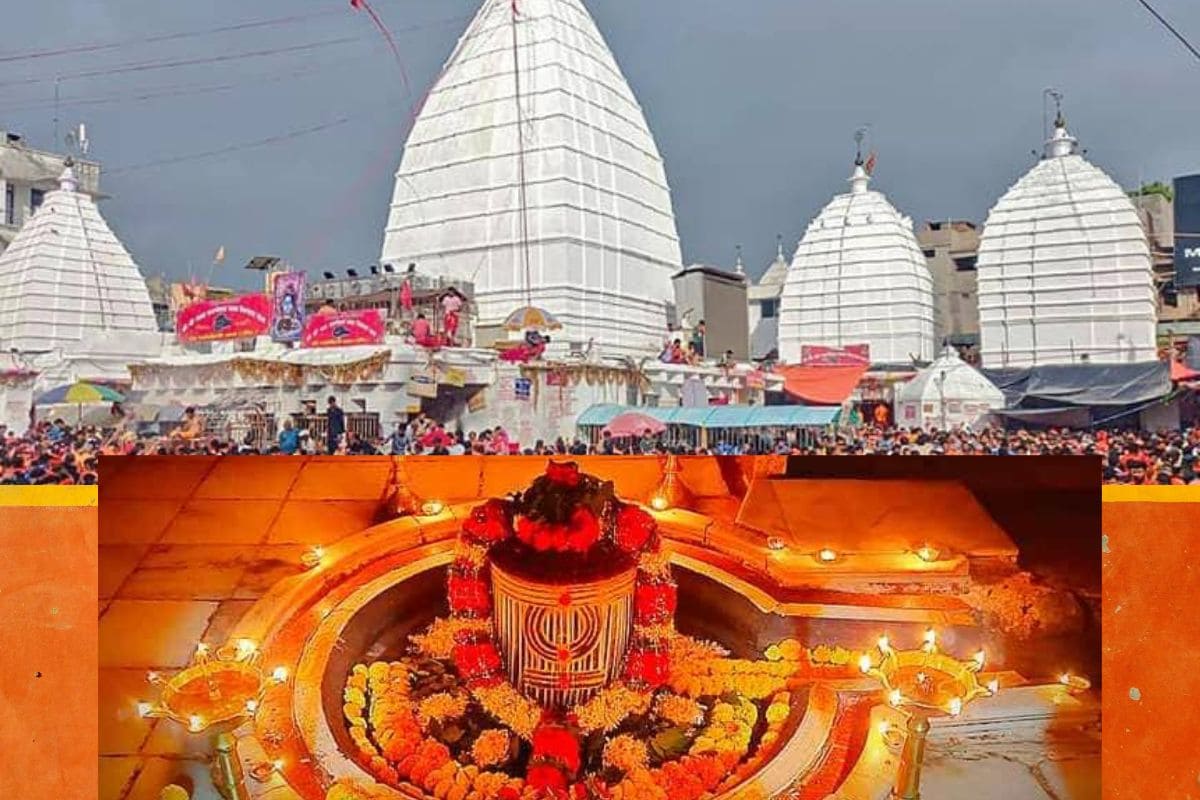Kashi Vishwanath Jyotirlinga temple history, Significance, location, nearest place
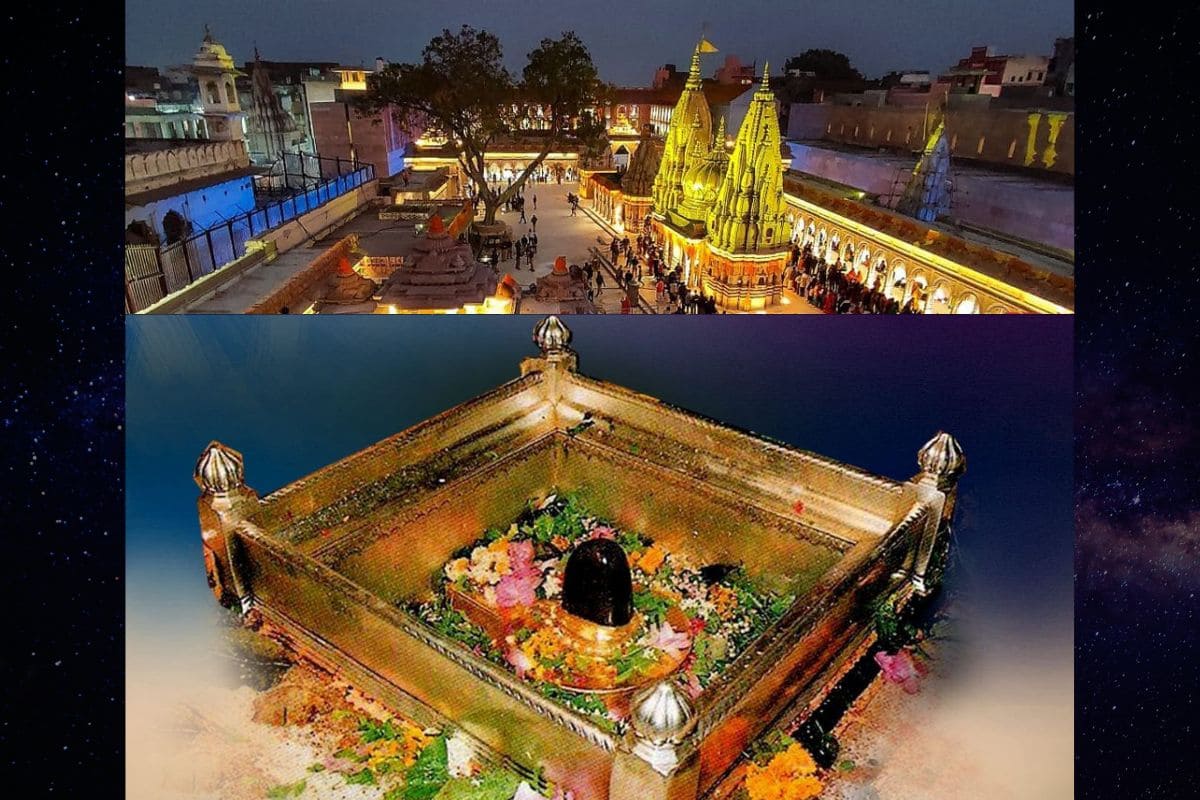
Kashi Vishwanath JyotirlingaTemple
‘Kashi Vishwanath’ means “The Lord of the Universe of Kashi” (Kashi = Varanasi, Vishwanath = Lord of the World). The Kashi Vishwanath Temple is one of the holiest and most iconic temples dedicated to Lord Shiva, located on the western bank of the sacred Ganges River in Varanasi, Uttar Pradesh. It is one of the twelve revered Jyotirlingas and is considered the spiritual center of India. The temple symbolizes the eternal energy of Lord Shiva and is a beacon of devotion, salvation, and divine power in Hinduism.
According to legend, Varanasi is the city where Lord Shiva himself resides and blesses devotees. It is believed that just a glimpse of the Kashi Vishwanath Jyotirlinga absolves one of sins and grants liberation (moksha). The present temple structure was built in 1780 by Maharani Ahilyabai Holkar of Indore, and the gold-plated spire and dome were later added by Maharaja Ranjit Singh of Punjab.
The temple has witnessed centuries of turmoil, including invasions and destruction by Mughal rulers, yet it stands as a symbol of unwavering faith and spiritual strength. Millions of devotees and tourists visit the temple each year, especially during the auspicious month of Shravan, Maha Shivratri, and Dev Deepawali.
Location
The Kashi Vishwanath Temple is located in the heart of Varanasi (Kashi), one of the oldest continuously inhabited cities in the world, on the banks of the Ganga River in Uttar Pradesh. It is easily accessible from major transport hubs:
- Just 5 km from Varanasi Junction (Railway Station)
- Around 25 km from Lal Bahadur Shastri International Airport
- Situated near Dashashwamedh Ghat, one of the main ghats of the city
The area is filled with narrow lanes, spiritual shops, ancient temples, and the sound of Vedic chants. The temple is part of the newly constructed Kashi Vishwanath Corridor, which connects the temple directly to the ghats and enhances the experience for pilgrims.
Route to Reach the Temple
- Start from Varanasi Railway Station or Airport
- Travel towards Godowlia Chowk (the closest motorable point)
- Walk around 500 meters through the narrow lanes to reach the temple
- Entry through the newly built Kashi Vishwanath Corridor
Nearby Places to Visit Around Kashi Vishwanath Temple
1. Dashashwamedh Ghat (0.5 km):
Significance: Famous for the Ganga Aarti, it’s one of the most sacred ghats in Varanasi.
2. Manikarnika Ghat (0.7 km):
Significance: The main cremation ghat; believed to grant moksha to the departed souls.
3. Kaal Bhairav Temple (1 km):
Significance: Dedicated to Lord Shiva’s fierce form; protector of Kashi.
4. Annapurna Devi Temple (0.2 km):
Significance: Temple of Goddess Annapurna, believed to feed the universe.
5. Sankat Mochan Hanuman Temple (5 km):
Significance: Popular temple dedicated to Lord Hanuman, the remover of obstacles.
Tulsi Manas Mandir (5.5 km):
Significance: Site where Tulsidas composed Ramcharitmanas.
7. Bharat Mata Mandir (4 km):
Significance: Dedicated to Mother India, featuring a map of India carved in marble.
8. Banaras Hindu University (6 km):
Significance: One of Asia’s largest residential universities with the New Vishwanath Temple inside its campus.
HISTORY
The Kashi Vishwanath Temple has a rich and tumultuous history. Texts such as the Skanda Purana, Shiva Purana, and Linga Purana praise the glory of Kashi and this Jyotirlinga. Lord Shiva is said to have revealed himself here in the form of a blazing light pillar – a Jyotirlinga. According to mythology, this city was never abandoned by Shiva, even during cosmic dissolution.
The temple has been rebuilt multiple times after being destroyed by Muslim rulers:
- The original temple existed in ancient times and was demolished during the invasion of Qutb-ud-din Aibak in 1194 CE.
- In the 16th century, Raja Todar Mal, a minister of Akbar, rebuilt it with Akbar’s permission.
- Later, in 1669 CE, Mughal Emperor Aurangzeb destroyed it again and built the Gyanvapi Mosque on its site.
- In 1780, the current temple was rebuilt adjacent to the mosque by Queen Ahilyabai Holkar of Indore.
- In 2019-2021, under the Kashi Vishwanath Corridor Project initiated by PM Narendra Modi, the temple complex was expanded and beautified to accommodate lakhs of devotees.
TIMELINE
Pre-11th Century:
- Mentioned in Puranic texts as one of the most sacred sites for Shiva worship.
- Ancient temple believed to have existed for thousands of years.
1194 CE – Qutb-ud-din Aibak:
- First recorded demolition of the original temple.
1585 CE – Akbar’s Period:
- Raja Todar Mal rebuilt the temple.
1669 CE – Aurangzeb’s Rule:
- Temple destroyed and Gyanvapi Mosque built over it.
1780 CE – Rebuilt by Ahilyabai Holkar:
- Temple relocated next to the mosque with grandeur and devotion.
1835 CE – Gold Plating:
- Maharaja Ranjit Singh donated 1 ton of gold to plate the temple’s shikhara and dome.
2019–2021 – Kashi Vishwanath Corridor:
- Modern restoration and beautification of the temple complex.
- Opened in December 2021, enhancing accessibility and pilgrim comfort.
RECONSTRUCTION
The reconstruction of Kashi Vishwanath Temple after centuries of destruction symbolizes the undying spirit of Sanatan Dharma. Maharani Ahilyabai Holkar’s efforts in 1780 ensured the temple regained its sanctity. Later, the addition of gold by Maharaja Ranjit Singh gave it a majestic appearance. The recent Kashi Vishwanath Corridor Project has transformed the temple precinct into a world-class pilgrimage hub with modern amenities, spiritual gardens, and direct connectivity to the Ganga ghats.
Mahakalleswar Jyotirlinga Temple
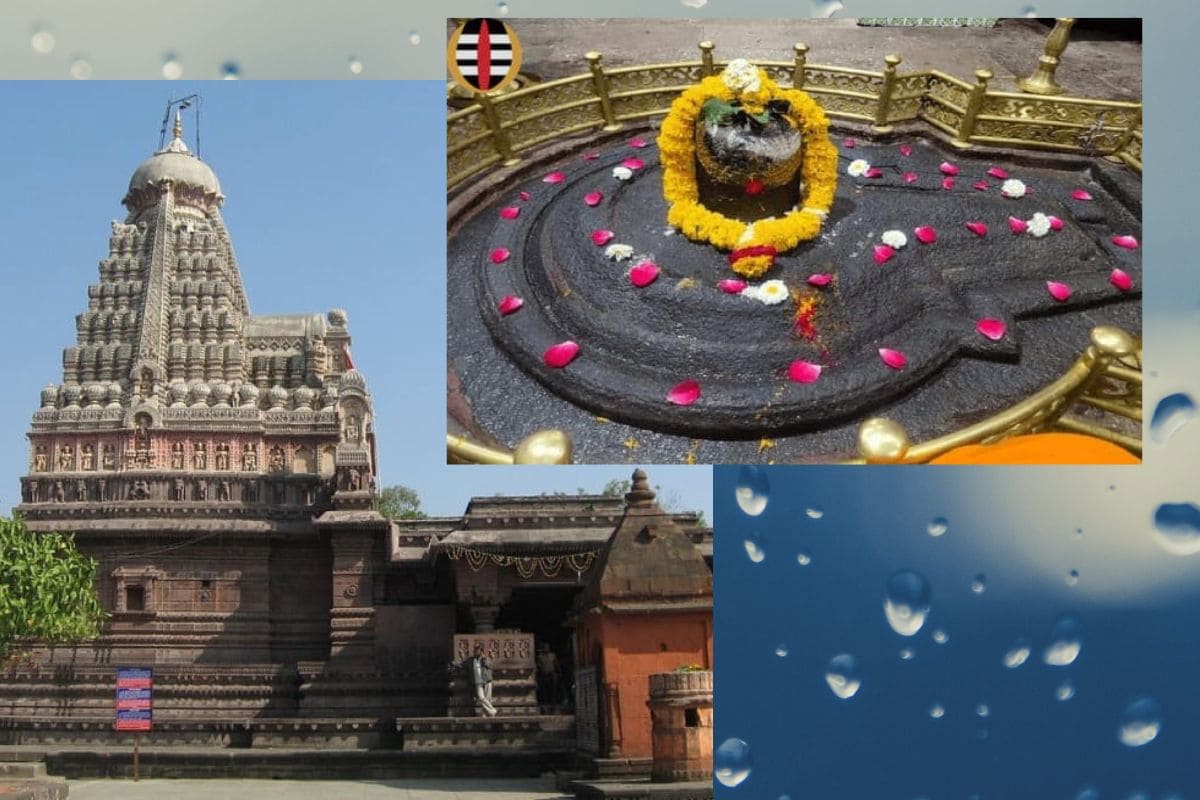
Grishneshwar Jyotirlinga temple history, Significance, location, nearest place
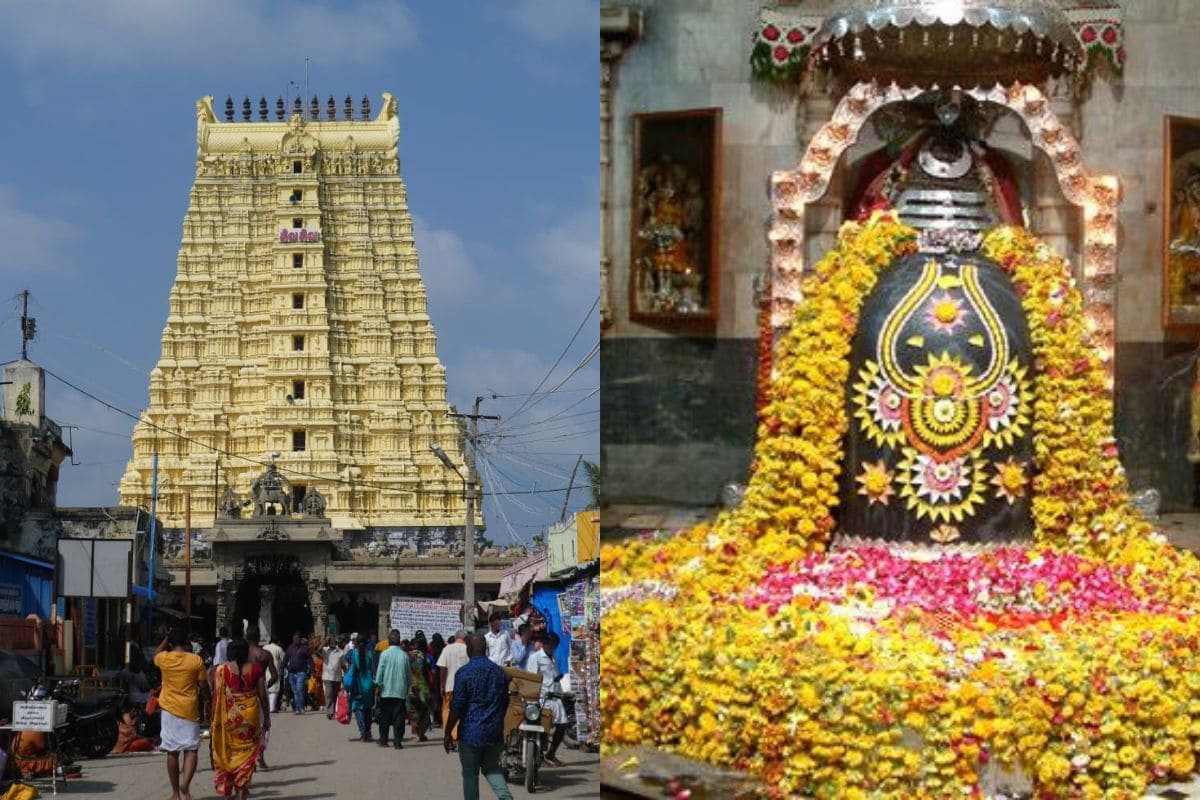
Rameshwaram Jyotirlinga temple history, Significance, location, nearest place
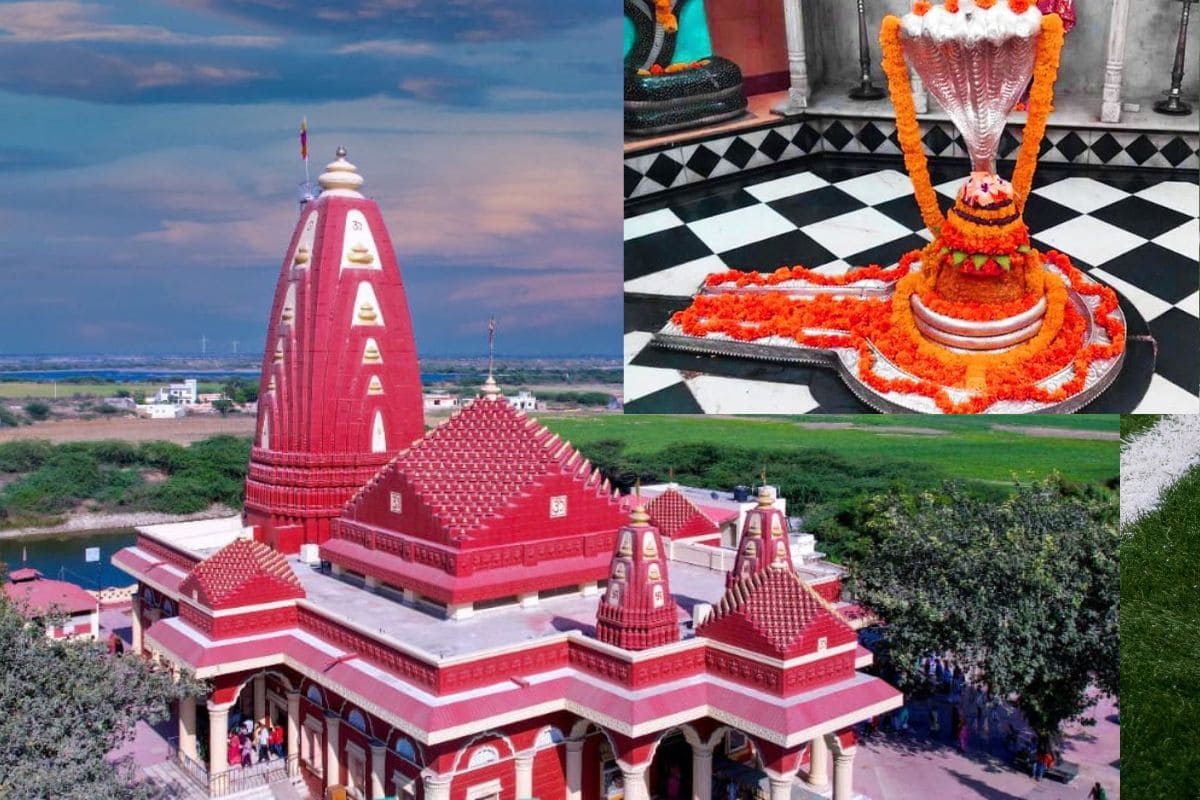
Nageshwar Jyotirlinga temple history, Significance, location, nearest place
